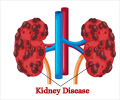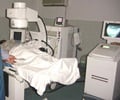A study reported that procedures such as stenting and angioplasty proved better when accompanied by a suction device to remove the blocking material from the blood vessels that supply kidneys.
A study published in the Journal of Vascular Surgery reported that minimally invasive procedures such as stenting and angioplasty proved better when accompanied by a suction device to remove the blocking material from the blood vessels that supply kidneys.
Researchers from the Wake Forest University Baptist Medical Center have concluded from a pilot study that short, less invasive procedures restored enough blood flow to the kidneys.‘Three to six weeks after the minimally invasive procedure, kidney function was roughly equal to what is typically achieved with major surgery,’ said Matthew S. Edwards, M.D., M.S., assistant professor of surgery and lead author. ‘We hope this will lead to a better way to do angioplasty and stenting by preventing damage to the kidneys and improving kidney function.’
The study suggests that the key to success was using suction to prevent the plaque and other material that make up blockages from reaching the kidneys and causing damage. In previous studies of angioplasty without a suction or filtering device, results have been inconsistent.
Angioplasty involves inserting a balloon-like device into the vessel to crush fatty deposits that are blocking blood flow. In many cases, a stent, or scaffold-like device, is inserted to help keep the vessel open. In this study, Edwards used what is called a ‘distal embolic protection system’ that consisted of a balloon system to temporarily block the vessel and a suction system to remove the bits of crushed material that made up the blockage. (Undesirable particles and air bubbles in the blood are known generally as ‘emboli.’)
The study involved 32 patients with a mean age of 70 years. Kidney function improved in 50 percent of the procedures and worsened in none. The narrowed arteries were reopened in 100 percent of cases and mean blood pressure was reduced from 176/81 mm Hg to 158/76 mm Hg.
‘These data suggest that distal embolic protection systems may prevent damage to the kidneys during angioplasty and stenting and warrant further investigation,’ said Edwards.
Advertisement
The condition is most common in people with severe, difficult to control high blood pressure. Over time, the hypertension can lead to the narrowed vessels. Conversely, in a small number of cases, it is narrowed vessels to the kidneys that cause hypertension. Surgery may be called for when patients have abnormal kidney function because of reduced blood flow to the organs, or when the uncontrolled hypertension has led to heart failure or blockages in other vessels in the body, such as those leading to the heart.
Advertisement
Source: Eurekalert











